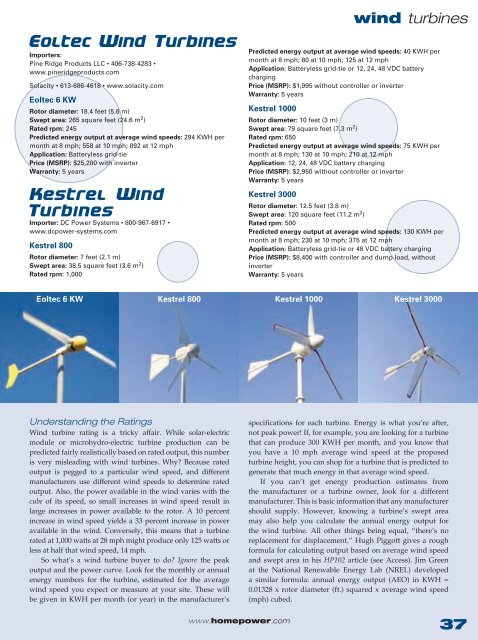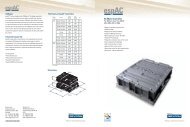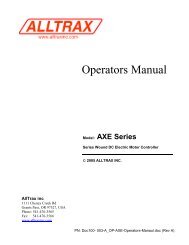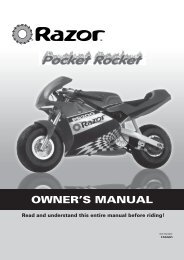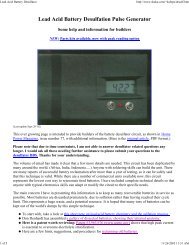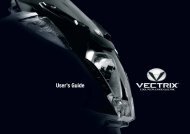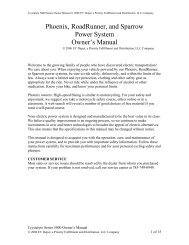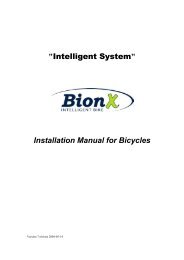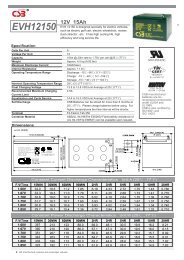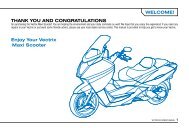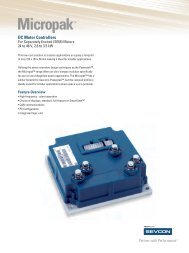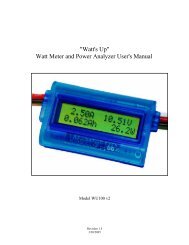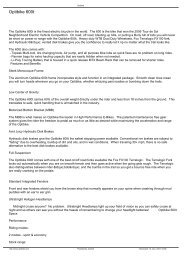Wind Turbine Buyers Guide - RENEW Wisconsin
Wind Turbine Buyers Guide - RENEW Wisconsin
Wind Turbine Buyers Guide - RENEW Wisconsin
You also want an ePaper? Increase the reach of your titles
YUMPU automatically turns print PDFs into web optimized ePapers that Google loves.
wind turbinesImporters:Pine Ridge Products LLC • 406-738-4283 •www.pineridgeproducts.comSolacity • 613-686-4618 • www.solacity.comEoltec 6 KWRotor diameter: 18.4 feet (5.6 m)Swept area: 265 square feet (24.6 m 2 )Rated rpm: 245Predicted energy output at average wind speeds: 294 KWH permonth at 8 mph; 558 at 10 mph; 892 at 12 mphApplication: Batteryless grid-tiePrice (MSRP): $25,200 with inverterWarranty: 5 yearsImporter: DC Power Systems • 800-967-6917 •www.dcpower-systems.comKestrel 800Rotor diameter: 7 feet (2.1 m)Swept area: 38.5 square feet (3.6 m 2 )Rated rpm: 1,000Predicted energy output at average wind speeds: 40 KWH permonth at 8 mph; 80 at 10 mph; 125 at 12 mphApplication: Batteryless grid-tie or 12, 24, 48 VDC batterychargingPrice (MSRP): $1,995 without controller or inverterWarranty: 5 yearsKestrel 1000Rotor diameter: 10 feet (3 m)Swept area: 79 square feet (7.3 m 2 )Rated rpm: 650Predicted energy output at average wind speeds: 75 KWH permonth at 8 mph; 130 at 10 mph; 210 at 12 mphApplication: 12, 24, 48 VDC battery chargingPrice (MSRP): $2,950 without controller or inverterWarranty: 5 yearsKestrel 3000Rotor diameter: 12.5 feet (3.8 m)Swept area: 120 square feet (11.2 m 2 )Rated rpm: 500Predicted energy output at average wind speeds: 130 KWH permonth at 8 mph; 230 at 10 mph; 375 at 12 mphApplication: Batteryless grid-tie or 48 VDC battery chargingPrice (MSRP): $8,400 with controller and dump load, withoutinverterWarranty: 5 yearsEoltec 6 KW Kestrel 800 Kestrel 1000 Kestrel 3000Understanding the Ratings<strong>Wind</strong> turbine rating is a tricky affair. While solar-electricmodule or microhydro-electric turbine production can bepredicted fairly realistically based on rated output, this numberis very misleading with wind turbines. Why? Because ratedoutput is pegged to a particular wind speed, and differentmanufacturers use different wind speeds to determine ratedoutput. Also, the power available in the wind varies with thecube of its speed, so small increases in wind speed result inlarge increases in power available to the rotor. A 10 percentincrease in wind speed yields a 33 percent increase in poweravailable in the wind. Conversely, this means that a turbinerated at 1,000 watts at 28 mph might produce only 125 watts orless at half that wind speed, 14 mph.So what’s a wind turbine buyer to do? Ignore the peakoutput and the power curve. Look for the monthly or annualenergy numbers for the turbine, estimated for the averagewind speed you expect or measure at your site. These willbe given in KWH per month (or year) in the manufacturer’sspecifications for each turbine. Energy is what you’re after,not peak power! If, for example, you are looking for a turbinethat can produce 300 KWH per month, and you know thatyou have a 10 mph average wind speed at the proposedturbine height, you can shop for a turbine that is predicted togenerate that much energy in that average wind speed.If you can’t get energy production estimates fromthe manufacturer or a turbine owner, look for a differentmanufacturer. This is basic information that any manufacturershould supply. However, knowing a turbine’s swept areamay also help you calculate the annual energy output forthe wind turbine. All other things being equal, “there’s noreplacement for displacement.” Hugh Piggott gives a roughformula for calculating output based on average wind speedand swept area in his HP102 article (see Access). Jim Greenat the National Renewable Energy Lab (NREL) developeda similar formula: annual energy output (AEO) in KWH =0.01328 x rotor diameter (ft.) squared x average wind speed(mph) cubed.www.homepower.com37


